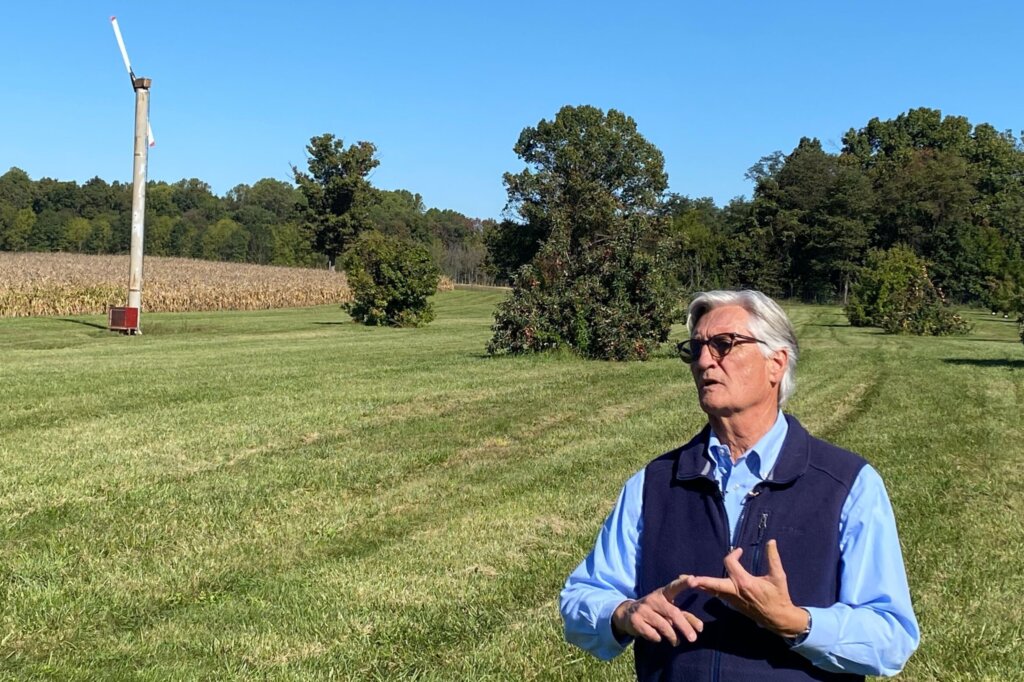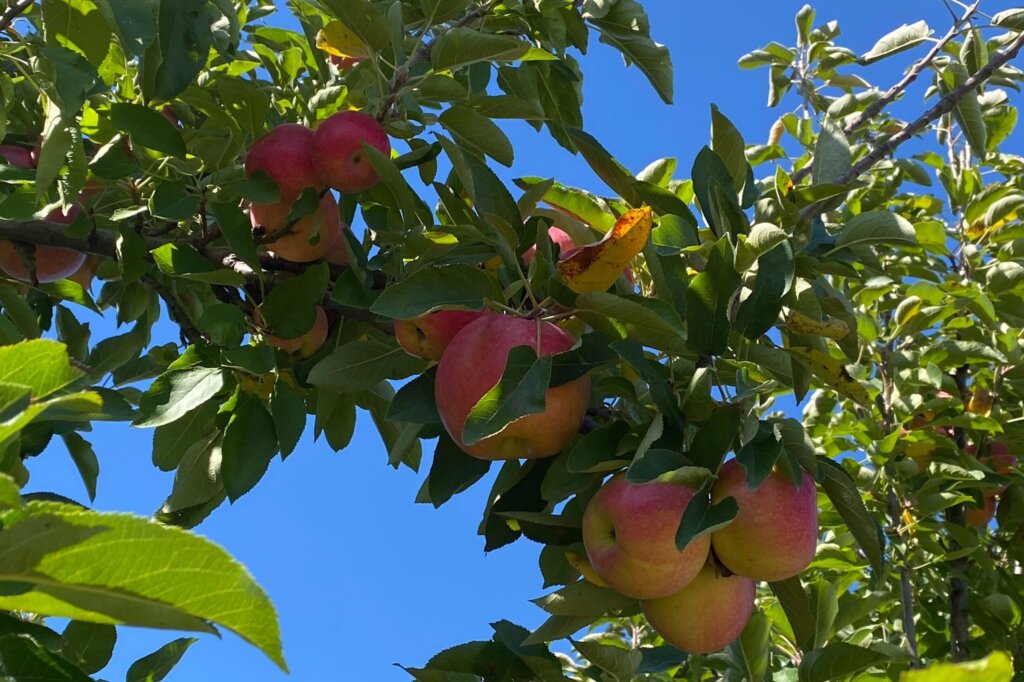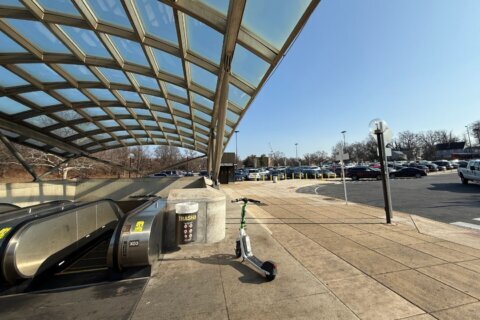This video is no longer available.
Chris Walsh, a professor emeritus at the University of Maryland, has spent decades growing apple trees. He grew up in Montgomery County, but worked on apple orchards in the Northeast after college.
For more than 30 years, Walsh has worked fields at the school’s research farm in Keedysville, Maryland — near the Potomac River and Antietam Creek in southeastern Washington County — trying to grow a better apple tree. Better for farmers and better for you.
This week, the U.S. Patent Office issued patents to the university for a yellow apple known, for now, as “MD-TAP1,” and a red apple known, for now, as “MD-TAP2.” “TAP” stands for Maryland Tree Architecture Program.

And the best part is these apples will thrive in this region because he’s bred them to be resistant to the changes our climate is experiencing.
“We needed stuff that was more heat tolerant here,” said Walsh. “Growers had grown Red and Golden Delicious for decades and done well with it. But all of a sudden, that market was drying up. Consumers were looking for different things. And so I was looking for things that were heat tolerant, but had many of the same attributes that Reds and Golden Delicious had.”
For one thing, he said, Golden Delicious apples are heat tolerant, while Red Delicious is an “attractive” and very sweet variety.

“And that’s what’s in Fuji — Red Delicious as a parent of Fuji, Fuji as a parent of this,” he said, holding up MD-TAP2.
A Fuji apple is one of the more commonly-grown varieties around the mid-Atlantic region, and the trees can get really big and require lots of pruning. They’re also susceptible to heat.
Walsh took what are known as “dwarf trees,” grew them and pollinated them with trees that produce more heat-resistant apples, and then took root stocks off of those trees and planted them in a different field. The new apples are in the “third field,” which has been used going back to 1991.
“What we’re trying to do is get things like this into the hands of local farmers, who can do a whole lot more with pick-your-own apples right at this time of year,” said Walsh. The TAP-1 apples are ripe for picking in September, and the TAP-2 in October.
“They’ll tolerate the ups and downs of weather here, they will provide a crop that’s palatable, really good, tasty,” said Walsh. And with farmers having a harder and harder time finding workers, he said these trees take that into account, too.
“If you’ve got a pick-your-own orchard, you can get rid of fruit, but you don’t have anybody to prune the trees,” he pointed out. “I’m trying to make it easier to not have to prune the trees … not have to put as much investment in so that essentially the sustainability, the economic sustainability, of the whole apple business will be improved.”
While crops like corn and wheat are more about growing as much as you can, a farmer will make more money when fruits like apples are good enough to make the produce aisle — not to get shipped off to a juicer or apple sauce processor. So quality, more than quantity, is what matters here.
And just how good are they?
“You got to taste them,” said Walsh. “One of the growers I work with, I gave him one last year around Halloween and he said ‘that’s a million-dollar apple.’ So I’m hopeful.”








